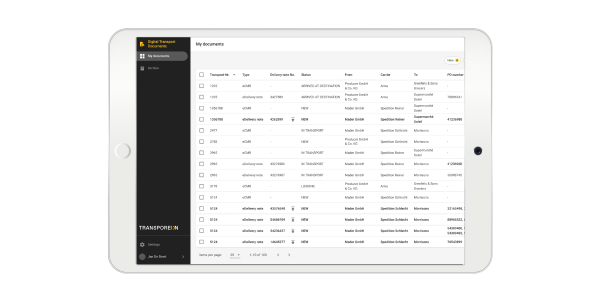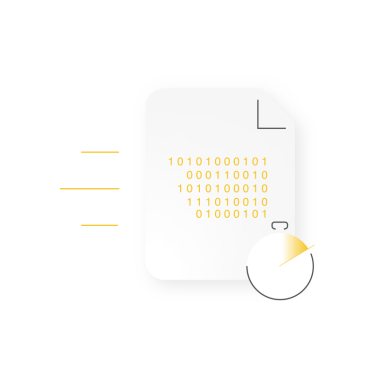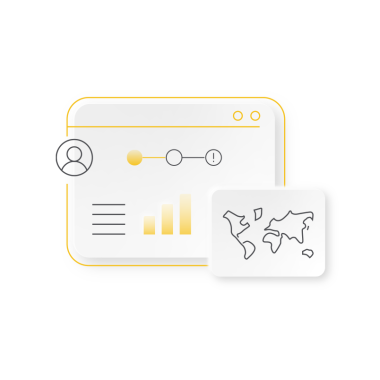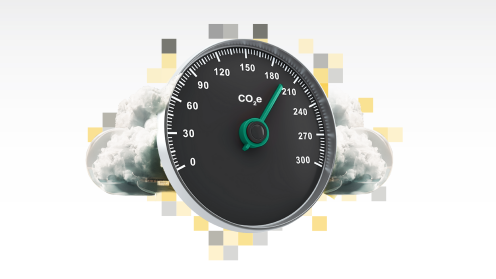The paperless revolution just got a whole lot closer. Digital Transport Documents is a simplifier – replacing sign-on-glass, it does a great deal more than turn a simple document into a PDF. It documents your activities digitally and electronically, facilitating greater visibility and faster, smoother efficiencies, while reducing paper output and releasing manual resources to serve the business profitably in other key areas.

Winning the paperless revolution
Gerry Daalhuisen, Tribe Lead, Dock Scheduling and Yard Management, dives further into the detail.
05/30/2023 | 8 min
2026 eCMR protocol
The paper-based version of the CMR, or transport consignment note, has been around for a long time – since 1956, in fact. It’s not hard to use in itself – all you need is a paper and pen, after all – but the follow-up process and management can become cumbersome and slow. We believe our Digital Transport Documents solution, with strong capabilities to digitise the CMR (eCMR), will help the transportation sector make giant strides in its path to automation.
Why is our Dock & Yard Tribe leading this effort? Simple – it’s traditional and normal for eCMR documents to transfer from the shipper to the driver and again to the receiver at the loading dock, so it is an obvious fit.
Back in 2011, efforts were made to digitise the eCMR protocol, with the recognition that cutting paperwork and streamlining data entry would lead to faster problem-solving and cost savings. However, since then, things have advanced significantly. The EU has set a deadline of 2026 for all member states to ratify the eCMR protocol – a formal digital data set that replaces the traditional paper CMR and can be easily shared among all parties involved. While most EU countries have already ratified the protocol, Germany only joined in 2022, and Austria and Italy are still in the process of ratifying. So, it's an ongoing journey towards full digital transformation.
Time and cost savings
The savings benefits in terms of both time and money are clear-cut.
According to an independently conducted 2020 automotive survey, the costs of handling a paper-based CMR, including the issuing, distribution, use, signing, filing, Proof of Delivery (PoD) and archiving, were calculated at 20+ minutes, at a cost of €6.23 in labour hours. The eCMR timings were calculated at 5.5 minutes and a cost of €1.69, a saving of over €4.50, or 72%.
Significant benefits
The transition to a digital process not only led to cost savings but also provided significant time benefits, as shown in a recent survey. Shippers enjoyed a time saving of 21%, while carriers benefited the most with a 51% reduction in time, primarily due to eliminating the need for paper document filing. This ultimately translates to improved economics, resulting in better prices for shippers and a more competitive offering for carriers. Thus, digitisation can be a strategic advantage for both shippers and carriers looking to enhance their operations and remain competitive in the market.
The components of the eCMR are the same as those of the paper version: signatures, submitted documents, and the facility to edit for remarks. Digital Transport Documents stores the data — not just a PDF — though the outputs can be printed as a PDF if preferred.

Signatures
Digital Transport Documents observes all requirements of the signature protocols demanded by the eCMR 2026 rules. There are three levels of signature denoted: Low/Simple, which cannot be linked to a specific individual (this category includes sign-on glass and the typical consumer signature models used for an Amazon delivery, for instance); Advanced, which sign-on glass does not provide and which recognises a signature by a stated individual; and Qualified, by which a token from a government or other recognised authority is deployed.
The EU eIDAS electronic signature regulations require the ‘Advanced’ model. In Digital Transport Documents, this works as follows: sign-in with a password and user name or with a QR code, then register with a one-time password so that we know the correct individual phone is connected to the signature. This is flexible, for good reasons, perhaps in the event of a temporary driver taking a journey at short notice, for instance.
All parties – shipperss, carriers and receivers – have real-time visibility and overview of the eCMR screens, with discrepancies or matters needing attention marked in red.
Driver process
The process is easy for the driver via a simple, intuitive mobile workflow. It is multilingual, recognising 28 languages, and works exactly like the small browser pages of a typical smartphone. The driver inputs a mobile number and name, with a one-time password for verification via text. The mobile workflow has sections for note taking and imagery upload, as well as QR codes to share with recipients as part of the handover process. When required, seal numbers can be entered and verified. All images and notes added to the stream, whether by the shipper, carrier, or driver, are visible to the recipient.
Highlights from our Q & A
Is Digital Transport Documents designed to replace sign-on glass?
Yes. You can still use sign-on glass if you wish, of course, but you also have the benefit of an authorised, advanced form of digital signature with Digital Transport Documents, which sign-on-glass does not.
Is Digital Transport Documents only available for Transporeon shipments?
It’s definitely an advantage to be on the Transporeon platform, but we can certainly offer the service to any TMS or ERP or WMS that can provide us with the data. It’s easy to use APIs with Digital Transport Documents and we can feedback on status and on deliveries. So, yes, you can use the eCMR tool separately from the platform, and it could prove to be your entry point to the Transporeon family of products if you so choose.
What’s the expected load coverage for an individual shipper with Digital Transport Documents before eCMR becomes mandatory in 2026 and bearing in mind the likelihood of carrier adoption?
2026 is not too far away, and we all know that the logistics sector works slowly! The trick will be for us to make it as simple as possible, with no predefined setup required. Adoption will be a slow ramp-up due to existing privacy rules, but these will be eased by new EU regulations next year.
How does the platform deal with secured cargo pictures?
Taking a picture of cargo secured in a truck can be done at the time of loading, and can be included as part of this document. Data is stored and can be retrieved as required. Remember, it’s not a PDF, though you can make one if you wish to.
Is eCMR the next app to be installed on a driver’s smartphone?
Drivers already have enough to think about without having to worry about technology requirements, so we make sure they don’t have to with Digital Transport Documents. The driver has a QR code which opens the browser and takes him or her on from there very comfortably. It’s very simple and was much appreciated by participants in the pilot. Can it be actioned without a mobile phone? That’s tricky, but we’re working on it.
Where are the completed eCMRs stored and are there any costs for the shipper to retrieve?
We have two types of solutions. Some users host in their own document management system, while the eFTI authorities also require access to eCMR and to our platform, so we retain and store it for the legal retention period, which varies from 7 to 10 years, country by country. All costs are embedded in the cost of the eCMR, so there are no retrieval charges.
Why should I implement Digital Transport Documents now, rather than later, given the 2026 eCMR deadline?
See our graphics for the clear savings that are there to be made from day one. A further benefit of acting quickly is that it increases visibility between you as a shipper and your recipients. They’ll be able to see exactly what you’re loading and when they will receive it, and all parties will be able to see any discrepancies or areas of potential delay. Real-time visibility and collaboration with your recipients are always helpful, which is a great recommendation for acting now.
Is a mass download of eCMRS possible? It can be useful when authorities are checking multiple shipments over a period of time rather than a single shipment.
Not yet, but I like the idea, it’s pragmatic and helpful.
What are the expected time and cost savings for forwarders and fleet owners with Digital Transport Documents?
You can expect dramatically minimised costs of handling, about 15 minutes per eCMR, with the associated labor savings. There are indirect cost savings in the visible exchanging of statuses, and from the independent, verifiable information provision in potential case of dispute. Your customers and partners also enjoy this visibility, so everyone benefits.
What is your revenue model behind the eCMR tool? Are the costs to use included in the revenue savings you outlined?
We will charge a transaction-based fee, as with our normal Transporeon pricing models. The costs and time savings overview I refer to did not include those costs, but of course it was carried out by an external, unrelated company to ourselves. The savings in time are still clear to see, and if a few cents should be added to the cost of the eCMR, it still constitutes a big saving.
How do you hand over the eCMR from the driver doing the pick-up to the driver doing delivery to final destination?
Everything is registered at every stage, including at driver handovers.
What are the minimum requirements to implement eCMR with you?
From the load-giver’s perspective, you can use it standalone. If you are already on the Transporeon platform that’s ideal because we can reuse data. Anyone can use the product, but those connected to the Transporeon platform can achieve more benefits than those ones that are not.
I’m a carrier – if my shipper selects to use eCMR, am I required to then access it and if so, what is the process for both parties?
Digital Transport Documents is designed as a solution to work with all parties, whether existing Transporeon customers or not. From the shipper’s perspective, if you are a Transporeon customer, you can issue an eCMR and can select any carrier you wish, whether they are on our platform or not. From the carrier perspective, if you are already with us, you will have that visibility, not just for that specific shipper but also for any follow-up shipper also connected to the platform, so you will be able to see eCMR overviews for any shipper connected to you, with the associated benefits and efficiencies.

New platform solutions available now
Discover the new solutions and innovations that make Transporeon’s Transportation Management Platform your one stop shop to move, manage and monitor freight globally.
Get in touch to learn more about our new solutions:
Want to learn more about our new solutions? Fill out the form below and we will get in touch to let you know how you can upgrade your business.
PRODUCTS
Explore our latest digital freight solutions
We debuted a collection of new products at TP Next. Find out more about our latest digital freight solutions and learn how our products work together in harmony to increase transport efficiency across the complete lifecycle of freight activities.




